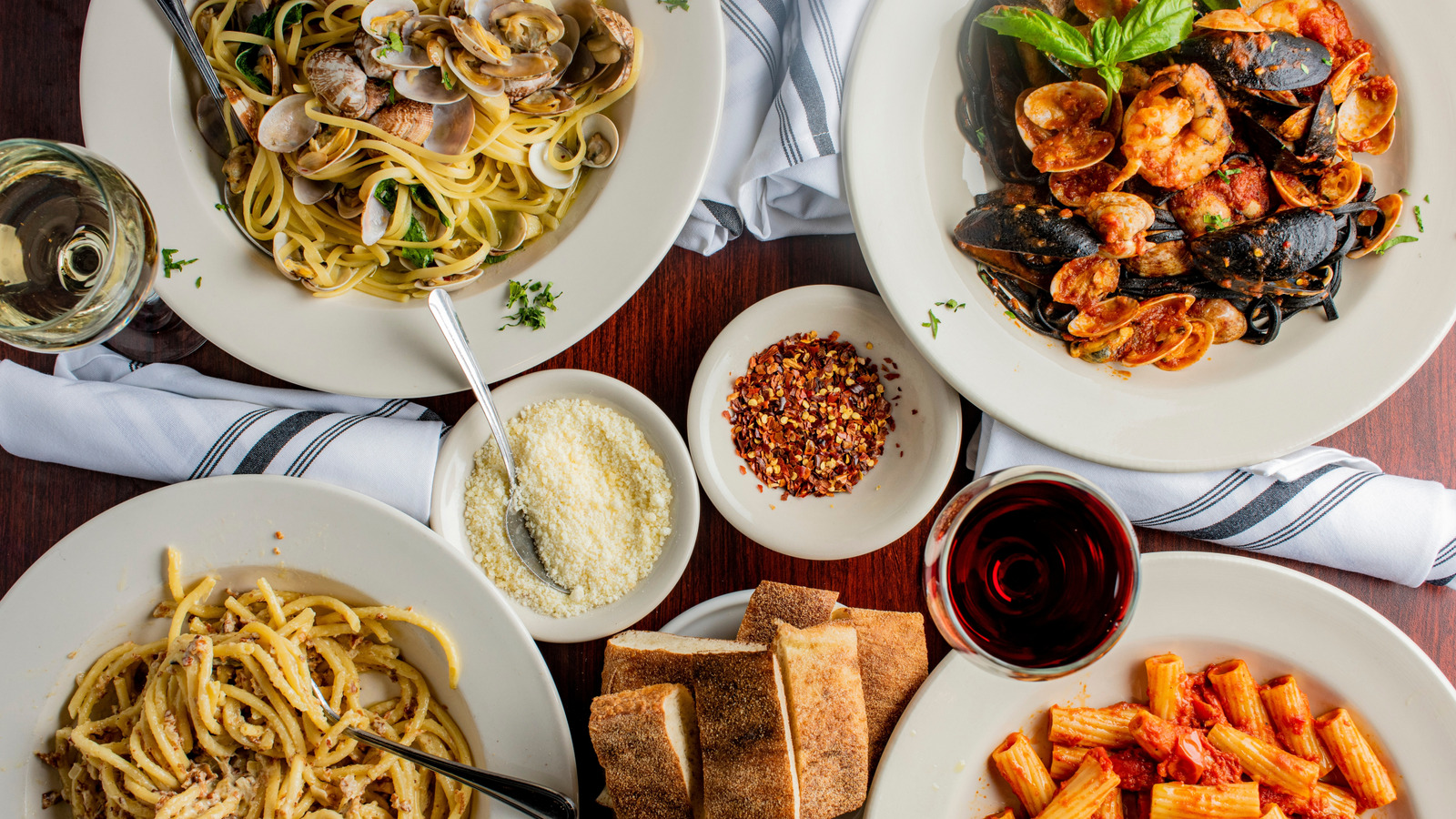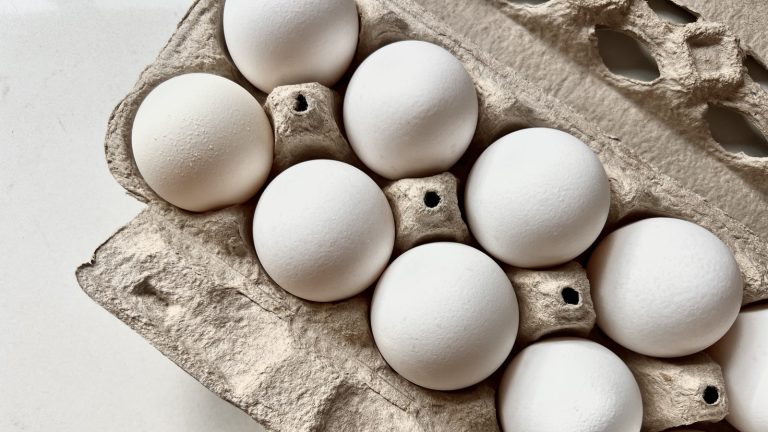We may receive a commission on purchases made from links.
Think Italian dining, and several famed associations likely come to mind: Tomato sauce, pasta, and hearty mains, all washed down with wine. Of course, such hallmarks are an oversimplification of the country’s historic and highly regional cuisine, but it is true that a nice glass of vino is basically an expectation at the dinner table. Subsequently, whether you’re taking a dry day or you’re not a drinker entirely, it can be hard to come up with nonalcoholic pairings for Italian food.
Thankfully, there’s no better era to dive into booze-free drink pairings. Nonalcoholic options are becoming more intricate by the day, not only replicating but exceeding the complex palates of fermented and distilled beverages. As a result, flavor possibilities don’t just impress standalone, but also offer potential for aligning with dishes on the table. Whether it’s reaching for the best nonalcoholic wines, making booze-free Italian cocktails, or whipping up creative mocktails on a different template altogether, rest assured there’s a world of options for an alcohol-free Italian dinner.
Consider food pairings with nonalcoholic wines
It’s hard to deny the pairing power of Italian wine and food. Whether you’re in the mood for a red, white, or bubbly, there’s a wide breadth of Italian producers to match. After all, pairing pasta and wine with pomodoro sauce is as fundamental as it gets when designing an Italian dinner menu. Nowadays, the wealth of alcohol-free wines on the market enables sommelier action without ethanol involved. You can opt for dealcoholized versions of classics, such as merlot or syrah, served up alongside dishes such as pasta e fagioli or an eggplant parmigiana. Or, go with a nonalcoholic chardonnay, bubbly, or rosé alongside a creamy risotto or Italian-style salad course.
Note the nuanced distinction of a wine alternative — which abandons a grape fermentation base — to find funkier overlap. Many of the most well-reviewed wine alternatives incorporate herbs, spices, fruits, and other flavorful compounds to achieve intricate palates. For these, pair on a bottle-by-bottle basis by investigating tasting notes and finding complementary and contrasting flavors, especially in bright salads, vegetable side dishes, or citrus-accented pastas and risottos.
Replicate Italian aperitivos with nonalcoholic alternatives
Congruent to tasty Italian wines, there’s also the expansive world of delicious Italian cocktails. Traditionally, these tipples are enjoyed as an aperitivo: A pre-dinner drink ritual that only comes with a light snack, such as potato chips or olives (not to say such habits aren’t broken). The pairing is especially tempting because booze-free analogues of Italian cocktails are among the tastiest beverages on the market.
Start at the Nogroni — an alcohol-free Negroni — which has already achieved revered status among contemporary bartenders. Opt for a well-regarded pre-bottled St. Agrestis Phony Negroni or craft your own using numerous spirit and apéritif alternatives — bottlings heavy on botanical and orange flavors work especially well to replicate the full-proof rendition. Then, serve it alongside dishes flavored boldly with anchovies, earthy greens, or even bruschetta; the drink’s bitter notes pair delectably with punchy Italian flavors.
Another great candidate for nonalcoholic drinking is the Garibaldi. A simple but effective duo of Campari and orange juice, it only necessitates one ingredient swap for sober sipping: Reach for a bitter and botanical alternative liquor — perhaps from the Nogroni lineup — to replace the Campari. Serve alongside pizza, or another dish with buffalo mozzarella.
Craft a tasty booze-free spritz
To dive even further into the world of Italian aperitivos, consider the subcategory of spritzes. After all, Italian meals are celebratory occasions, and what’s more festive than bubbles? You’re likely already familiar with modern-day classics such as the Aperol and Hugo spritz, but don’t underestimate the nonalcoholic alternatives of such drinks.
Much like the aforementioned apéritifs, the secret to a tasty booze-free spritz lies in the alcohol-free liquor. Many bottlings replicate Aperol’s herbal, citrusy, sweet flavors; offerings such as Ghia non-alcoholic apéritif and Lyre’s Italian spritz lend comparable complexity without the booze. Alternatively, Giffard also makes a booze-free elderflower liqueur to replicate a Hugo spritz. Employ an expert-recommended substitute for a nonalcoholic spritz and you might reach for such bottles even if you’re craving booze. Complement with a well-rated nonalcoholic sparkling wine, perhaps a brut to let the liqueur shine. Serve alongside various antipasti or small bites, such as arancini or polpette meatballs, for a perfectly-paired start to the meal.
When working with nonalcoholic ingredients, feel free to ditch classic cocktail templates altogether. Mix and match with boozeless apéritifs, berries of your choice, herbs such as sage or mint, and perhaps even flavored soda. Incorporate ingredients into both the drink and dinner — say, a basil-inflected spritz and a caprese salad — and the pairing naturally impresses.
Intricate teas mingle well with Italian flavors
While there’s certainly lots of inspiration found riffing on alcoholic drinks, don’t neglect the complex palates of already boozeless beverages. An especially delicious candidate is tea; while Italians don’t have a culture of drinking tea alongside food, that’s not to say the brewed beverage doesn’t align.
Start by experimenting with black tea. The beverage is tannin-dense like wine, lending a perceptible dryness that aligns well with Italian cuisine’s hearty flavors. A brewed cup of an aromatic varietal stands up to star proteins — perhaps a roasted leg of lamb or a hearty, Italian-style beef stew. Meanwhile, the more herbal notes of green tea do well alongside chicken dishes, foods with pesto, or vegetable sides such as nutty artichoke and romanesco, which packs in a similar natural sweetness.
Note that tea’s temperature is part of the pairing as much as flavor; consider the meal context to brew iced or hot. Don’t sleep on teas with distinct palates, either; you can hand-pick varieties per precise plate. For instance, borrow from Japanese cuisine by brewing some genmaicha: The roasted rice and green tea leaves go well with seafood, so serve with dishes featuring swordfish, monkfish, or a whole branzino. Meanwhile, there’s some enticing culinary crossover with the savory notes of a sencha — it goes well with the umami present in Parmesan or tomatoes — making it an effortless Italian pairing. So brew a pot of a nice tea and try alongside Italian flavors. Worst case, you can enjoy the rest after dinner.
Overlap fermented flavors with kombucha
From balsamic vinegar to pizza dough starter and cured meats, fermentation plays a prominent role in Italian foods. Subsequently, turn to the funky notes of kombucha for drink pairings. Transforming a tea base through fermentation and further ingredient additions, the resultant beverage is wide-ranging, complex, upheld by a carbonated body, and often has palatable tangy undertones. Both kombucha and red wine are high in polyphenols, plant-derived antioxidants which lend bitter, astringent flavors. Due to kombucha’s typically high acidity, think of pairings in vein to a particularly tangy red wine, such as a Chianti.
Serve the beverage alongside dishes heavy on tomato sauce, perhaps a chef-favorite such as marinara. Alternatively, pour a glass with vinegar-centric foods such as scapece Gallipolina — vinegar-doused sardines — or zucchini scapece pasta, which soaks zucchini in the same tangy liquid. A vibrant salad, such as the classic caprese, also overlaps with kombucha’s tasting notes.
In certain versions of regional Italian cuisine, kombucha can occupy a status akin to beer. While this fermented beverage’s palate runs a tad sweeter, it nonetheless hits the spot alongside a calzone or pizza dough crafted from scratch. Finally, kombucha is often infused with further fruit, herb, and spice flavors. Procure a product such as rosemary-infused kombucha, and enjoy alongside a rosemary tomato stew. With some varied sampling, you can find a nonalcoholic pairing that fits.





